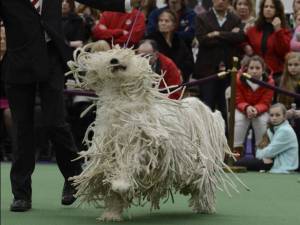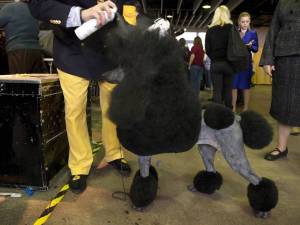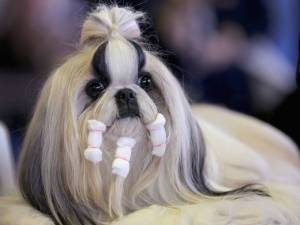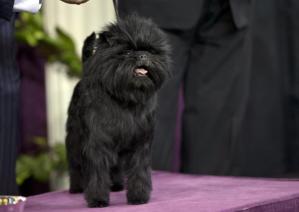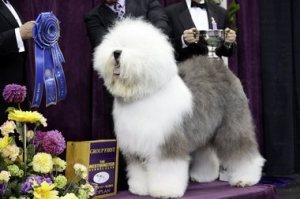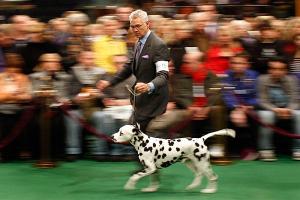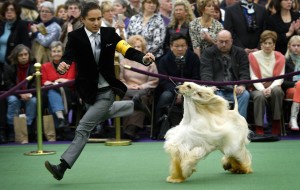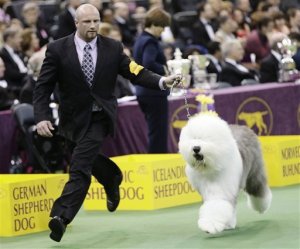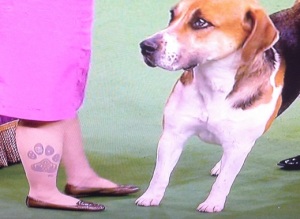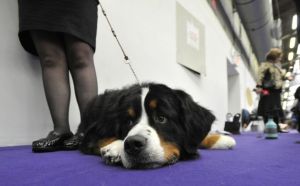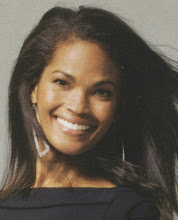Theatre and film are two of my biggest passions, so when I heard that Neil Meron and Craig Zadan would be producing the 2013 Academy Awards, I figured they'd deliver the razzle dazzle like nobody's business.
Partners at Storyline Entertainment, the executive producers brought shows like Chicago and Hairspray from the stage to the silver screen. While their most recent foray in television, Smash, reaffirmed a talent for bridging the gap between Broadway and Hollywood.
I believe that the best art, like the best fashion, can result from combining high and low. In fact, shows like Chicago-- a smart social commentary about the sacred, the profane and all that jazz-- are the best argument for mixing things up. Which is why I was over the moon when I found out that Seth McFarlane would be hosting the Oscars.
Between his creation of Stewie, the smart-mouthed toddler with an upper-crust British accent on the animated TV series Family Guy and Ted, last year's blockbuster about a teddy bear with the mouth of a stevedore, I figured Sunday would be a night to remember. So much so, that I emailed my sister-in-law Kim (a fellow-Ted fanatic) the picture below; with a pre-Oscar greeting saying, "Chillax, and Enjoy the Show!"
I hope she's still speaking to me.
The first sign that something was off came when Kristin Chenoweth appeared on the red carpet to interview the stars.
 |

Between the rising pitch of her voice and the bulging veins in her neck, I feared the perky little actress was on the brink of having an aneurysm every time she started raving about some "AAAAAAAAAAMMMMMMMAAAAAAAAAZZZZZZING!!!" gown...
Or marveling over how "short" she was in comparison to the assorted glitterati.

At 4'11', it strains credulity to imagine that Chenoweth never noticed she was on the petite side of the spectrum until standing next to Hugh Jackman on Sunday night. But... whatever. If you've ever had the misfortune of being held captive by a precocious seven-year-old telling one-too-many knock-knock jokes, or lecturing you on the evolution of dinosaurs; you'll have a good idea of what it was like watching Chenoweth go on and on, with no hook in sight.
The dynamo went from being adorable to unbearable rather rapidly. But, she's so damned cute that I felt like a bitch for even harboring a critical thought.


As manic as things were outside, things only got worse when McFarlane took the stage-- where he appeared stiff, awkward and unsure of what a frat boy like himself was doing in a nice place like the Dolby Theatre... not to mention hosting the entire shebang.

To make matters worse, his affect was completely flat. But I'd be willing to give him a pass on that score, since chances are the universe lacked enough energy to power McFarlane and Chenoweth simultaneously. (Kinda' like the time the lights went out at the Superdome midway through Beyoncé's electrifying half-time show at the Superdome.)
http://www.usmagazine.com/celebrity-news/news/seth-macfarlane-insults-adele-melissa-mccarthy-for-their-weight-with-rex-reed-joke-at-the-oscars-2013252
I'm no slouch when it comes to juvenile humor. My sister has yet to forgive me for taking her (then-underaged) daughter to see "Brüno," and cracking up through scenes that my niece later suggested might not have been "appropriate for children." In other words, I'm pretty immune to being offended by comedy, as long as it makes me laugh. But what I find unacceptable, is a comic who's material is not funny. And this was the case with McFarlane: who, like Chenoweth, reminded me of the over-indulged kid who is foisted upon party guests by parents who make claims like: "I know all parents say this, but my little Seth is sooooo hilarious!!! (Parent turns to little Seth, and encourages:) "Go ahead, Honey, tell 'em the one about blah, blah, blah..."
Invariably, kids like these are seldom hilarious, and their ability to pick up on non-verbal cues telling them so tend to be terribly undeveloped: leaving captive audiences to literally grin and bear it until Little Seth runs out of steam and trots off to bed.
My only motivation for grinning and bearing Big Seth's nearly five hour schtick was a determination to see Benh Zeitlin win an Oscar in each of the three categories (Best Picture, Best Director and Best Adapted Screenplay) for which his debut film, "Beasts of the Southern Wild" was nominated, and to cheer when his secret-weapon of a leading lady, Quevenzhané Wallis, took home her statuette for Best Actress.
Seems me, Benh and Quevenzhané couldn't win for losing on Oscar night.
My disappointment that "Beasts" didn't get the recognition it deserved in any category (how could a director who elicited such unforgettable performances from two non-actors not get the nod for Best Director?!) would turn to utter despair by the end of the show, as McFarlane and Chenoweth burst into a song & dance about "Losers." Demonstrating a callousness that would have shocked a sociopath, the two even called out Wallis in their duet-- in spite of the nine-year-old's having stayed up well past her bedtime, and with tremendous grace, to endure a too-long, self-important, boring production that had nothing to do with the honorees, and everything to do with the producers.
I wish I could report that McFarlane and Chenoweth were the only celebrities suffering from Fish-Out-of-Water Syndrome. But that was the overarching theme of a night in which Meron and Zadan seemed to excel at taking performers out of their comfort zones, and putting them in very awkward positions.
Channing Tatum and Charlize Theron doing a ballroom dance was the most benign example of the trend. And while the choreography was lovely, the entire exercise was apropos of nothing.

Catherine Zeta-Jones's bumping and grinding through "All That Jazz" only served as a reminder that it takes a lot more than a pretty face to deliver the kind of scissor kicks, moxie and charm that made stars out of Chita Rivera, Bebe Neuwirth and Ute Lemper when they played Velma Kelly on Broadway. As for singing, there was never cause for speculation that any of the latter three ever lip-synced their way through a live performance-- which was not the case when Zeta-Jones made her comeback on Sunday night.

And yet these missteps were nothing compared to the biggest faux pas of the night: which became apparent when the lovely Jennifer Lawrence took a tumble as she ascended the stage to accept her Best Actress Oscar for "Silver Lining Playbook." (Though, if one had to stumble in public, one could only hope to fall with such élan. Between her roles in "Winter's Bone" and "The Hunger Games," I have to admit that I'd always seen Lawrence as a diamond in the rough. But she looked more like a Hitchcock heroine than victim as she lay semi-prone at the foot of the stairs. I even found a lovely symmetry to the vantage point: which showed off the drape and cut of her pale pink silk brocade Dior Haute Couture strapless gown, Chopard diamond necklace and structured-yet-soft chignon to magnificent effect!)

As is her style, Lawrence recovered with typical wit, humor and candor: "Thank you. You guys are just standing up because you feel bad that I fell and that's really embarrassing but thank you."
I, on the other hand, was feeling anything but magnanimous toward the men who brought jazz hands to the general public. What would it take, I wondered, for Zadan and Meron-- men who'd spent their entire careers observing women wearing floor-length gowns and high heels-- to realize that the combination of the former with a highly-polished staircase is a disaster waiting to happen? Could neither showman anticipate the need for walkers, who might be strategically positioned to assist women through the most vulnerable legs of their journeys, from seat to stage, as they accepted their Oscars? Or is that simply beyond the pay grade of the average producer?
That said, there's nothing like a damsel in distress to bring out a knight in shining armour when and where you least expect it.

Kudos to Jean Dujardin (who was presenting the award), and Hugh Jackman (who was seated in the front row, proximate to the actress)-- both of whom immediately leapt into action with outstretched hands the second Lawrence lost her footing. The evidence of such chivalry being alive an well in LA, albeit via France and Australia, made my heart leap in my chest. And, best of all, proved that I could still count on Hollywood to deliver the razzle dazzle when the chips are down.


























